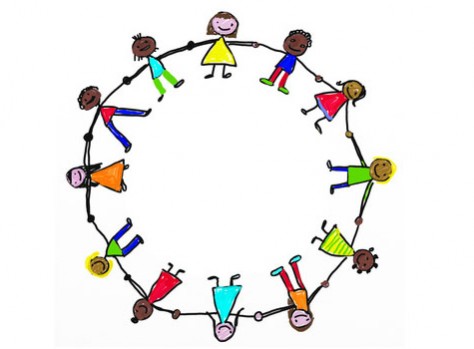Holistic education is a philosophy of education based on the premise that each person finds identity, meaning, and purpose in life through connections to the community, to the natural world, and to spiritual values such as compassion and peace.
Holistic education intends to call forth from people an intrinsic reverence for life and a passionate love of learning. This is the definition given by Ron Miller, founder of the journal Holistic Education Review (now entitled Encounter: Education for Meaning and Social Justice). The term holistic education is frequently used to denote to the more democratic and humanistic types of alternative education. Robin Ann Martin (2003) describes this further by stating, “At its most general level, what distinguishes holistic education from other forms of education are its goals, its attention to experiential learning, and the significance that it places on relationships and primary human values within the learning environment.”
The concept of holism pertains to the idea that all the properties of a given system in any field of study cannot be determined or explained by the sum of its component parts. Instead, the system as a whole determines how its parts behave. A holistic way of thinking tries to encompass and integrate multiple layers of meaning and experience rather than defining human possibilities narrowly.
Tools/Teaching Strategies of Holistic Education
- The idea of holism supports a transformative approach to learning. Rather than seeing education as a process of transmission and transaction, transformative learning involves a change in the frames of reference that a person may have. This change may include points of view, habits of mind, and world views. Holism understands knowledge as something that is built by the context in which a person lives. Therefore, teaching students to reflect critically on how we come to know or understand information is essential. As a result, if “we ask students to develop critical and reflective thinking skills and encourage them to care about the world around them they may decide that some degree of personal or social transformation in required”.
- The idea of connections is emphasized as opposed to the fragmentation that is often seen in mainstream education. This fragmentation may involve the dividing of individual subjects, dividing students into grades, etc. Holism sees the various aspects of life and living as integrated and connected, therefore, education should not isolate learning into several different components. Martin (2002) illustrates this point further by stating that, “Many alternative educators argue instead that who the learners are, what they know, how they know it, and how they act in the world are not separate elements, but reflect the interdependencies between our world and ourselves”. Included in this idea of connections is the way that the classroom is structured. Holistic school classrooms are often small and consist of mixed-ability and mixed-age students. They are flexible in terms of how they are organized so that if it becomes appropriate for a student to change classes, (s)he is moved regardless of what time of year it is on the school calendar. Flexible pacing is a key in allowing students to feel that they are not rushed in learning concepts studied, nor are they held back if they learn concepts quickly.
- Along the same thread as the idea of connections in holistic education, is the concept of transdisciplinary inquiry. Transdisciplinary inquiry is based on the premise that division between disciplines is eliminated. One must understand the world in wholes as much as possible and not in fragmented parts. “Transdisciplinary approaches involve multiple disciplines and the space between the disciplines with the possibility of new perspectives ‘beyond’ those disciplines. Where multidisciplinary and interdisciplinary inquiry may focus on the contribution of disciplines to an inquiry transdisciplinary inquiry tends to focus on the inquiry issue itself”.
- Holistic education feels that meaningfulness is also a vital factor in the learning process. People learn better when what is being learned is important to them. Holistic schools aim to respect and work with the meaning structures of each person. Therefore, the start of a topic would begin with what a student may know or understand from their world view, what has meaning to them rather than what others feel should be meaningful to them. Meta-learning is another concept that connects to meaningfulness. In finding inherent meaning in the process of learning and coming to understand how they learn, students are expected to self-regulate their own learning. However, they are not totally expected to do this on their own. Because of the nature of community in holistic education, students learn to monitor their own learning through interdependence on others inside and outside of the classroom.
- As mentioned above, community is an integral aspect in holistic education. As relationships and learning about relationships are keys to understanding ourselves, so the aspect of community is vital in this learning process. Forbes (1996) states, “In holistic education the classroom is frequently seen as a community, which is within the larger community of the school, which is within the larger community of the village, town, or city, and which is, by extension, within the larger community of humanity”.
